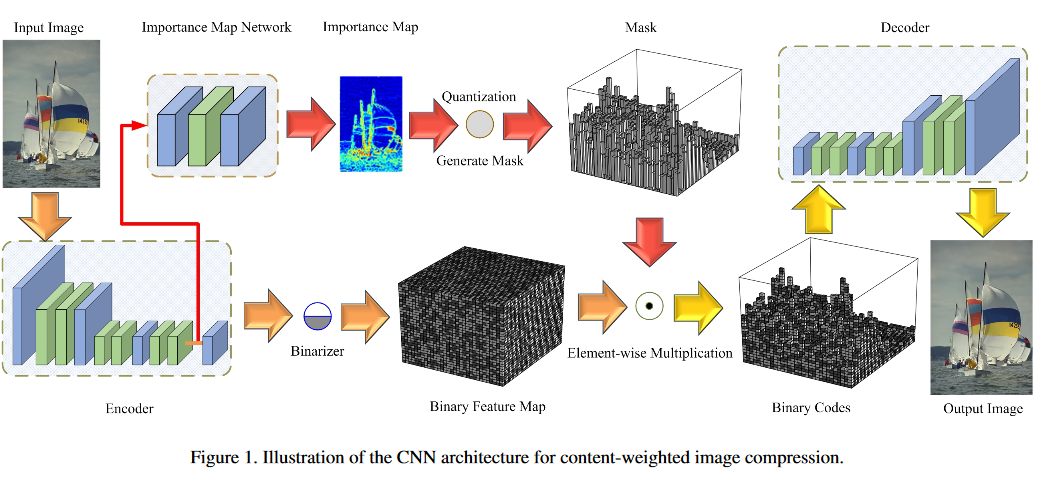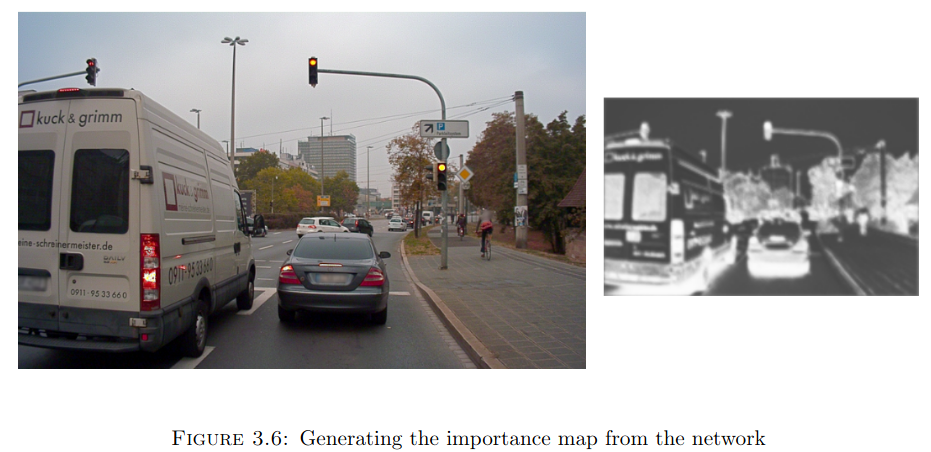This repository defines a model for learnable image compression based on the 2018 CVPR paper "Learning Convolutional Networks for Content-Weighted Image Compression by Mu Li et. al.. I used this as a baseline model while working on my bachelor thesis. For any doubts please feel free to write to me.
As illustrated in the figure above, the content-weighted image compression framework is composed of four components, i.e. convolutional encoder, binarizer, importance map network, and convolutional decoder. Given an input image x
- the convolutional encoder defines a nonlinear analysis transformation by stacking convolution layers, outputs E(x)
- The binarizer B(E(x)) sets the encoder features with sigmoid output higher than 0.5 to 1, and others to 0
- The importance map network takes the intermediate feature maps of the encoder as input, and yields the content-weighted importance map P(x)
- A rounding function is adopted to quantize P(x), and then a mask M(P(x)) which has the same size as B(E(x)) is generated with the guidance of the quantized P(x)
- The binary code B(E(x)) is then element-wise mutiplied with M(P(x)) to get the trimmed binary codes
- Finally, the decoder defines a nonlinear synthesis transformation to produce the reconstructed image
$\hat{x}$
The model is trained in 2 steps
- Train the model without using the importance map branch.
- Introduce the importance map branch in the pre-trained model and fine-tune.
To train the model, you need to supply it with a dataset of high quality RGB images and a set of validation images to track the reconstruction. The data is read through a glob pattern which must expand to a list of RGB images in PNG format. Training can be as simple as the following command:
The training script can be configured from the yaml file and can be easily adapted for your own usage.
python train.pyThe number of epochs to train the main branch for depends on the size of your dataset. While using Cityscapes, which has a training size of 2,975, the model was trained with a batch size of 64 for 1200 epochs. This will train the model without the importance map after which you must use the importance map branch and train for a few more epochs with a reduced learning rate.
Check issues section
The importance map that my network learnt to generate on A2D2 after being trained on Cityscapes. You can read more about my experiments in my bachelor thesis, the link to which is available on my homepage.
Please cite the original paper if you use this work.
@InProceedings{Li_2018_CVPR,
author = {Li, Mu and Zuo, Wangmeng and Gu, Shuhang and Zhao, Debin and Zhang, David},
title = {Learning Convolutional Networks for Content-Weighted Image Compression},
booktitle = {Proceedings of the IEEE Conference on Computer Vision and Pattern Recognition (CVPR)},
month = {June},
year = {2018}
}
